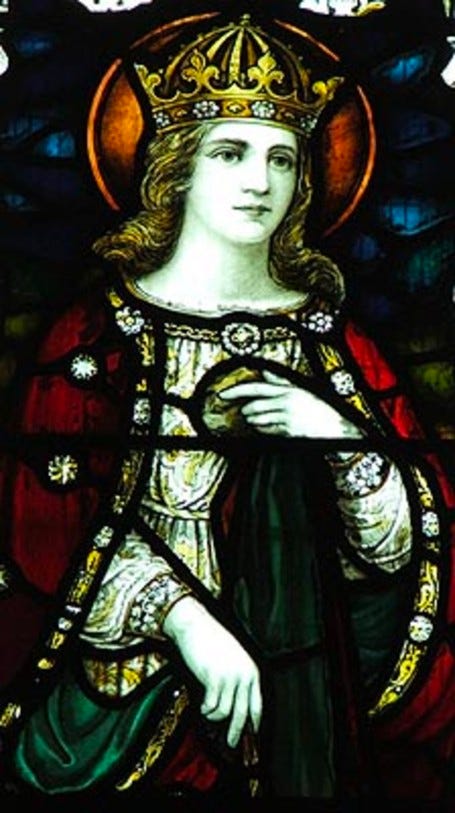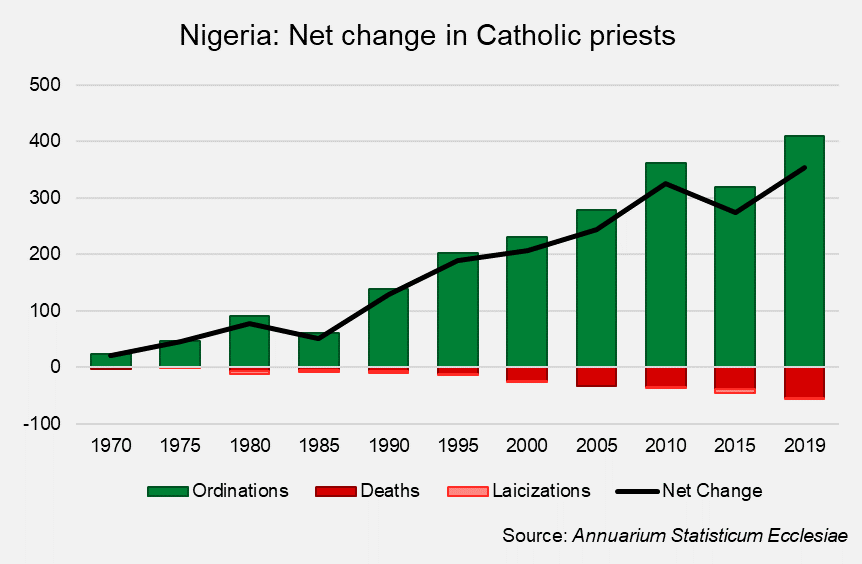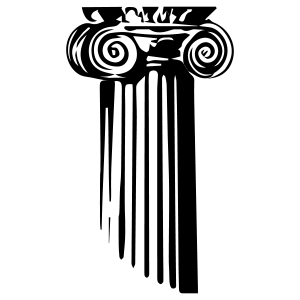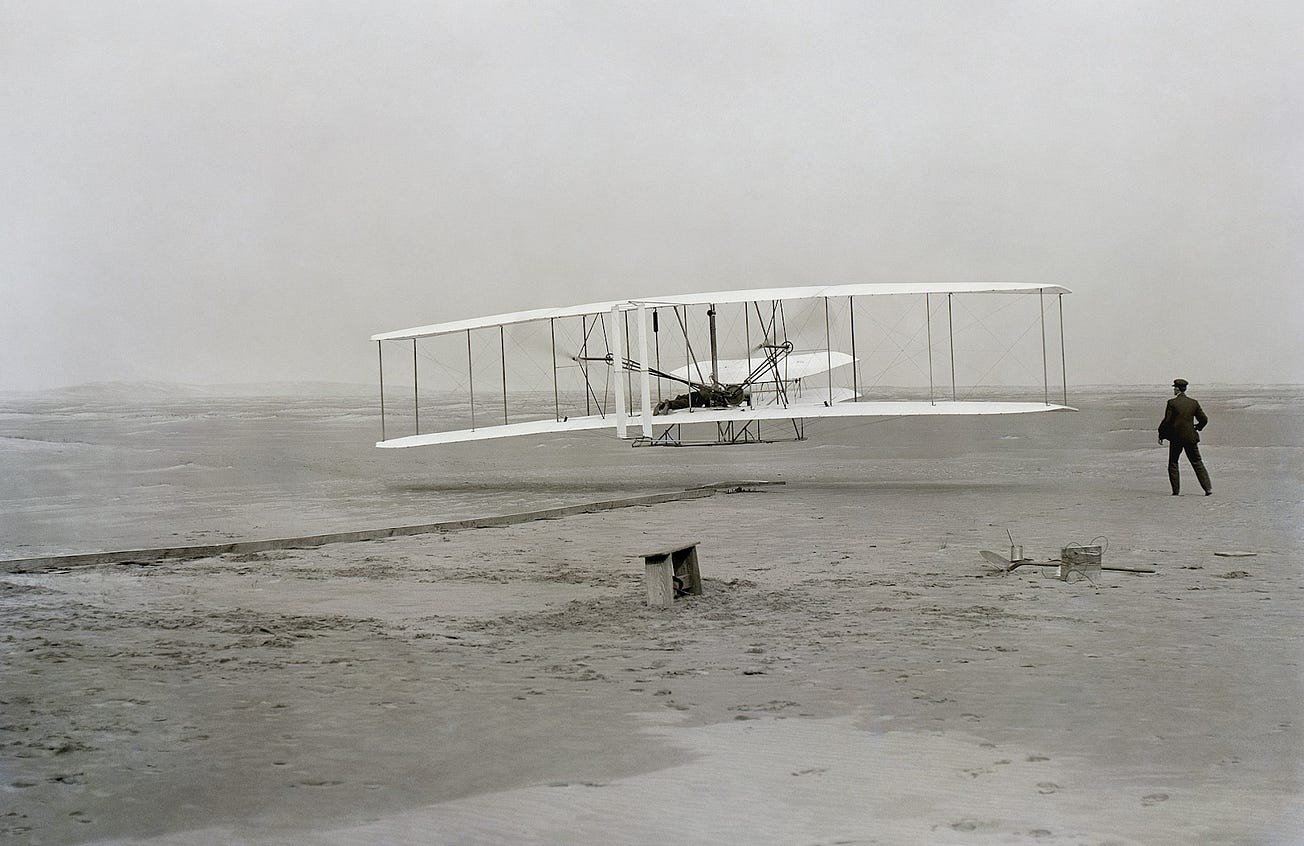Hey everybody,
Today is the feast of St. Glwadys ferch Brychan, and this is The Tuesday Pillar Post.
St. Gwladys was a Welsh queen with an absolutely wild story.
Here’s the deal:
According to Arthurian legend, Gwladys, or Gladys, was born in the fourth century, and was the daughter of an Irish king living in Wales. Gladys, who was raised in the faith, was apparently beautiful.
In fact, she was so beautiful that another local king, Gwynllyw, asked her hand in marriage several times. Gladys’ father kept refusing, so Gwynllyw did what kings do: He sent 300 armed men to kidnap Gladys.
After a couple of fierce battles, and with the kidnapping complete, Gwynllyw and Gladys married. They had the same monogram, which made the towels easy.
Gwynllyw and Gladys had several children, including Cadoc, who was raised a Catholic, and eventually converted his father Gwynllyw to Christianity.
Apparently after Gwynllyw became a Christian, he begged Gladys’ forgiveness for, well, kidnapping her, and apparently she forgave him.
They are recorded as having ruled justly and fairly together as Christian monarchs after Gwynllyw’s conversion, until the two discerned in prayer that God wanted them to be hermits. They moved into a hermitage, ate like vegans, and lived out their lives as holy companions.
So I guess all’s well that ends well.
Today canon law explicitly prohibits a woman to marry a man who has kidnapped her, unless he first sets her free, and she freely chooses marriage from a safe place. Call it the “Beauty and the Beast” provision. But in Gladys’ time, insofar as I know, there was no such law.
Of course, we’ve very little idea how much of the legends about Gladys accurately depict her life story. But we know she has been venerated as a saint for nearly 1,500 years, and I trust she is interceding for us.
St. Glwadys ferch Brychan, pray for us.
The news
The bishops’ university
The Catholic University of America this morning appointed a new president, Dr. Peter Kilpatrick, a chemical engineer who spent a decade as a Notre Dame dean, and was most recently the provost of the Illinois Institute of Technology.
I sat down yesterday with Dr. Kilpatrick for a substantive and serious conversation about his vision of a Catholic university, and his aims for CUA — which occupies a unique role in the Church, as it was established by the U.S. bishops and chartered by Pope Leo XIII.
CUA occupies a unique role in the life of the Church today too — many U.S. theologians, canonists, liturgists, and other Church leaders are formed there, and the university has a unique relationship to the U.S. bishops’ conference and the Church at large. Consider that both Benedict XVI and Pope Francis have made it a point to visit the place. So the CUA presidency is a job with the potential to impact a lot of things in the life of the Church — and Dr. Kilpatrick says he is eager to get going.
Global vocations
Most conversation about the Church’s priestly “vocations crisis” centers around the U.S. and Europe — in the U.S., more than one-third of priests are retired, and Europe has seen sharp drops in the number of priests ordained in recent decades.
But The Pillar’s Brendan Hodge took a look this week at the state of diocesan priestly vocations around the globe — and what he found is important:
Even in many places where the number of vocations is growing, the Catholic population is growing too, raising questions about the future ratio of priests to parishioners around the globe.
At the same, Brendan took a look at net change in diocesan priests — finding that some of the places with the most ordinations also have the fewest annual priest deaths or laicizations, leading to a net growth in the number of priests in those regions.
You simply don’t find stuff like this anywhere but The Pillar. And we love to publish it.
So read all about the changing global reality of priestly vocations.
‘Love means radical solidarity’
The Pillar’s Charlie Camosy talked this week with Sr. Marie Veritas of the Sisters of Life, about a new pro-life video project the sisters have launched in partnership with the University of Notre Dame. They also talked about the unique apostolic mission of the Sisters of Life:
We’ve found that when serving a woman in a crisis pregnancy, love means radical solidarity with her, which means meeting her where she is at. Our posture of heart is to look at each woman not as a project, a task, or an argument to be won, but as a daughter of God, beloved, sacred, with dreams and a destiny.
When a woman is able to see and experience herself as a gift, she is then able to experience her child as a gift. A woman who knows she is loved can do anything.
…
Many of the women share with us how their abortions wounded them deeply, and how they battled for years, even decades, with this pain. But God has a unique and beautiful plan of healing for every soul; there is no sin or darkness bigger than the love and mercy of Jesus Christ.
Don’t miss it. Seriously. It’s the Sisters of Life.
Sordid use?
We reported last week about a former church in New York sold by a parish to a Hindu group converting the space into a temple.
After that reporting, Ed and I asked whether the Vatican needs to give more concrete norms on what can be done with shuttered churches, and what can’t.
In fact, fairly direct rules already exist, but we looked at a former church in the Diocese of Spokane, Washington, which in 2011 was sold to a Masonic lodge, and converted into a hall for Masonic rites.
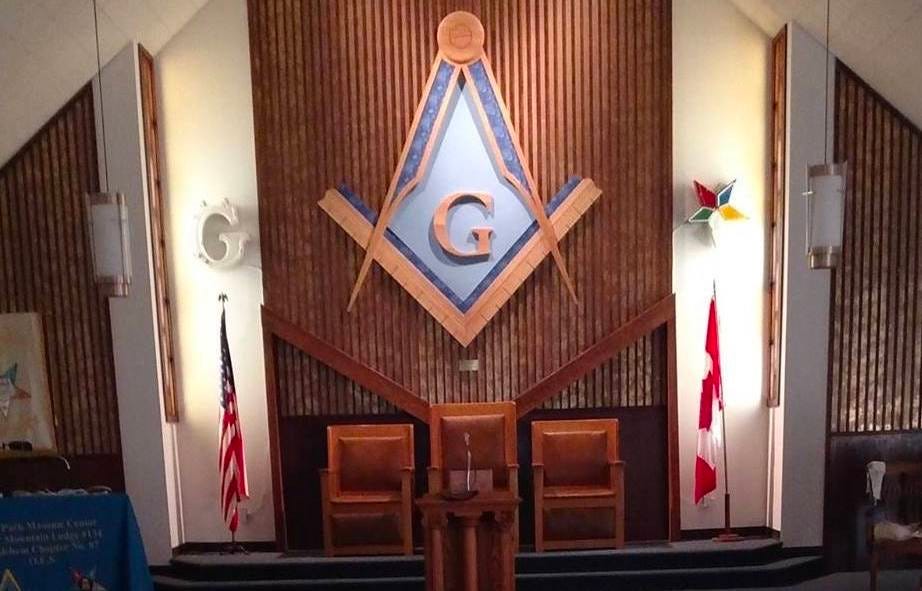
The Masons are a “forbidden society” in Catholic law and theology. So why, we asked, did the bishop of Spokane think that use would fit within the Church’s guidelines? And what can be done to ensure that former Catholic churches are treated with the respect their dignity requires?
After Slap-gate, some Catholic history
When we got to the office on Monday morning, we found that most of America was talking about the “slap heard ‘round the world” — Will Smith’s open-palmed smacking of comedian Chris Rock at the Oscars Sunday night.
If you haven’t heard about this yet, I admire your media discipline. But most of you have. And at The Pillar, we got to talking about some of the most famous slaps, punches, and all-out brawls in Catholic history.
They include the time a Habsburg archduke reportedly punched a papal heckler, the time Pope Boniface VIII got backhanded by an angry cardinal, and the punch that wasn’t — the apocryphal tale of St. Nicholas punching Arius the heretic.
I know you’re going to want to read this list. Who wouldn’t?
‘Going backwards’
The National Catholic Reporter reported this morning about a private gathering of bishops, theologians, and journalists — from the National Catholic Reporter, mostly — who met in Chicago this weekend with the aim, according to Cardinal Oscar Maradiaga, to “understand the spirit of what they call the ‘opposition’” — apparently opposition both to Pope Francis and to the Second Vatican Council.
It can’t be denied that there is in the United States a cadre of Catholic voices and figures who are reflexively opposed to everything done and said by the pontiff — figures who have formally accused the pope of heresy, who talk on social media about the pontiff as an enemy, or give talks about how to “resist” him.
And I hear somewhat often these days, and from people who surprise me, that elements of the Second Vatican Council should be rescinded, abrogated, or corrected — surprising, given that Vatican II was an ecumenical council of the Church, an act of the Church’s divinely conferred teaching and governing authority.
In my experience, those voices are a looming presence among Catholic media and social media, and far less often encountered in the wild. But they certainly exist, and I often find when speaking at a parish or a university that someone will eventually approach me to discuss the latest missive about rescinding Vatican II from figures like Archbishop Carlo Vigano or various YouTube provocateurs.
Those things represent a fracturing among the cadre of Catholics who once might have been described as “new evangelization focused,” and, for some, a drift into theological positions they wouldn’t have expected to hold just a few years ago. And that does represent a serious pastoral and intellectual concern in the life of the Church.
There are other Catholics, and I know many of them, who have found themselves disoriented, confused, or even frustrated by aspects of ecclesiastical governance in recent years, genuinely confused about what the Church teaches or about some actions of Pope Francis. For a “pope of surprises,” acknowledging that reality can hardly be taken as an indictment.
And those two groups are not the same.
So it is surprising to hear a member of the pope's leadership council, Cardinal Maradiaga, lament that the “opposition” to Pope Francis includes people “going backwards — looking to the old liturgy or maybe things before Vatican II.”
The cardinal describes a remarkably broad swath of people with those phrases, and seems to understand that anyone “looking to…things before Vatican II,” or to the “old liturgy” might be described as opposed to Pope Francis.
So what was this event all about? It’s hard to say it was really about understanding, since one of the principal organizers, Fr. Mark Massa of Boston College, said before the conference that the conclusion was actually foregone:
“We want to show that opposition to Pope Francis, not universally, but to a large extent is opposition to Vatican II,” Massa told the Boston College Torch last week.
To clarify — do we aim to show what we believe, or do we aim to understand?
If the aim of the gathering was to “understand” such people, they don’t seem to have been invited, to have been heard, to have had an opportunity for dialogue or synodality, as it were.
Fr. Massa lamented that “we’ve reduced people to soundbytes,” and added that “it’s possible to be on a spectrum of positions and still be considered a good Catholic and not be called names by people who disagree with you.”
I’m not sure if that includes the “opposition,” who were seemingly discussed — not, mind you, in soundbytes — but in full sentences, I guess. They are the ones looking to “things…before Vatican II.”
The event merits some follow-up questions. It will be interesting to learn whether those bishops who attended agree that Catholics “looking to the old liturgy,” can be universally seen as opposed to Pope Francis.
It’s also interesting to think about the Second Vatican Council itself. The council was shaped and driven by a theological movement focused on looking to the past — on rediscovering the riches of the Church’s most ancient theological, liturgical, and practical customs — on engaging the modern world with the wisdom and experience of the early Church.
In short, the council was frequently about looking to the things which preceded it. If that’s actually anathema for Catholics, then the very foundations of the Council, which encourage, for example, religious orders to look to their own past to understand their present, are called into question.
But that can’t be the Spirit of Vatican II, can it?
Ok, so why do I raise all this? Because there is real division in the Church, on left and right. Catholics calling for Vatican II to be rescinded or calumniating the pope, and Catholics calling for doctrinal truths to be tossed out, and denigrating the Church’s history. Those voices aren’t serving the mission of evangelization, and they haven’t often received a response, let alone a correction, from their proper hierarchs. That can lead to scandal, and become a counter-witness to the Gospel.
The Church, it seems to me, is in need of real reform and renewal. The Church needs the Holy Spirit to heal wounds and error, and to inculcate the unifying and tempering virtue of ecclesiality.
Actually, that’s why I’ve been bullish on the synod on synodality — because it represents the opportunity for people who disagree with each to learn one another’s names, to learn to have a genuine conversation, and then to receive an invitation to leave ideology at the foot of the altar — an invitation to a deeper kind of conversion to the Way, the Truth, and the Life.
We all need that conversion. I need that conversion. But if the us-them paradigm remains the prevailing approach, and dueling teams just hold dueling conferences about the “opposition,” it’s hard to imagine that real ecclesial communion can be borne of the Holy Spirit’s presence, or that we might be transformed by the renewal of our minds.
Anyhow, that’s the perspective from where I sit. Come Holy Spirit!
And, in the meantime, we need you. You know this — we need you to subscribe, to share, to generally help The Pillar keep working for ecclesiastical accountability and integrity, for discipleship of truth, through the apostolate.
And you get cool emails in your inbox, which is great — and don’t forget that during Lent, we’re making donations to the Ukrainian Archeparchy of Philadelphia’s Ukraine Relief Fund for every new subscriber, or even for every new signup to our mailing list.
OR:
In the meantime, please be assured of our prayers. And please pray for us. We need it.
In Christ,
JD Flynn
editor-in-chief
The Pillar

